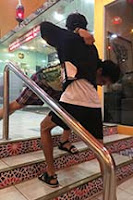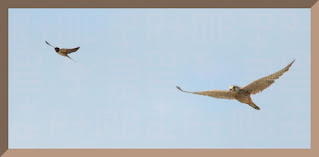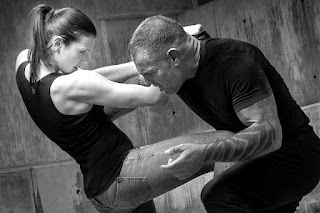The name “Gankaku” translates to “Crane on a rock” due to the one legged stance called tsuru dachi (Crane stance) evident in the Kata. The Kata develops proprioception which involves good balance, proper joint alignments and awareness of body position in space. This is because it is believed to be used for fighting on treacherous grounds which maybe rocky, slippery or sandy, it is also believed to be used on uneven terrains like ramps, slopes or stairs. Those sequences moving away from the start line are believed to mean that you are above the stairs or on higher ground and your opponents are below. Those movements going towards the start line means that you are below or on lower ground.
Though it is
strategically advantageous to be on higher ground but that will not always be
the case so it is prudent to learn how to fight on lower grounds. A strong core
and balance is immensely important for a technique to be effective. In a Karate
tournament a kick or a punch will not be considered a point if the player falls
or gets off balanced. More so when it comes to fighting in difficult terrains, an off-balanced strike will not be as effective. 
Fighting on uneven terrain
During combat, it is very important for the mind and the spirit to be centered or balanced. Never be over confident nor too afraid, too tensed; too relaxed; too aggressive or too passive. In a very stressful and intense situation being centered means being calm and composed to be able to think and act accordingly. Achieving good balance is also a principle that we should apply in our daily lives. Most of the time, too much or too little of anything is not healthy for us. “Chudan”or the middle is our target. Too much materialism would lead to greed and selfishness but at the same time understand that we need material wealth in order to live a descent life and be able to bless others as well. There are lots of different modern diet plans to choose from to achieve your health and fitness goals but the most basic principle of a healthy diet is a well-balanced meal. Over training leads to injuries and hinders your progress even more but very little training will not help you progress at all.
"Gankaku Kata"
Too much or too little focus on one pillar of your life negatively affects the quality of your life. Too
much work might lead to neglect of family, too much for yourself and
relationships might suffer, too much for your community or friends then your
work might suffer and so on. I am aware that in order to have achievement and
enjoyment in each of the pillars one must have the most valuable resource of
all which is Time. Just like money, time also runs out and just as you have to
make money one also has to make time. Karate-do practice aims to develop
self-discipline. To achieve balance we must have the ability to be flexible.
Adapt to your circumstances and be able to make the time for each aspects of
your life. Apply First thing first or prioritize. There are only two reasons you will make time for Karate training and anything else in your life, one is you need or have to do it, two is you want to do it.
Mind, Body and Spirit as one


_2%20copy.bmp)














